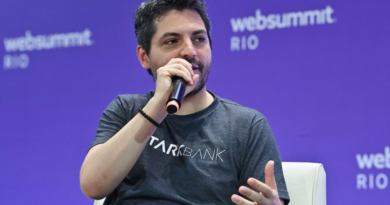Here's why it's taking you so long to land that new job
Frustrating. Footslogging. Endless.
Did the thought of searching for a role come to mind? If so, you’re not imagining it: The job hunt has become markedly more ruthless, despite claims that workers currently hold the leverage. That’s according to ZipRecruiter’s latest Survey of New Hires, which the company publishes quarterly. Respondents are over 1,500 U.S.-based workers who started their current jobs fewer than six months ago—and this quarter, they’re rankled.
According to ZipRecruiter, it’s taking longer for workers to find new jobs—and fewer new highers are getting offered signing bonuses. Respondents told ZipRecruiter they were also less satisfied with their experience on the job hunt than those surveyed in Q4 of last year. And fewer than half (46%) of respondents said they were able to find their new role within a month. (In Q4, 60% said the same.)
Worse still, just 58% of people characterized the job search experience as positive—a 10% month-over-month drop.
New hires may be better positioned than anyone to assess the labor market. As ZipRecruiter writes, they’re “the first to experience changes in the urgency and intensity with which employers are recruiting workers, and the terms of employment on offer.” But in tracking how long it took for these new hires to find their jobs, whether they received a signing bonus, and whether they snapped up desirable benefits, ZipRecruiter showed just how tenuous the job landscape is, and what it’s clearly missing.
If you look at the big picture, though, the first quarter of 2024 brought some good news. The share of workers who reported being actively recruited—and the share who fielded counter-offers from their old jobs—both hit historic highs, ZipRecruiter found, which is a testament to workers’ enduring upper hand. Per data from the Bureau of Labor Statistics, there were 8.76 million job openings in February 2024. Keep in mind: Prior to the pandemic, monthly openings had never exceeded 8 million. Plus, with a February unemployment rate of 3.9%, the U.S. rate has fallen below 4% for 25 months in a row, breaking a sixty-year record.
On the other side of things, the recruiting picture is starting to shapeshift—and that might affect your job-hunting experience, too. Instead of traditionally posting job descriptions on sites like LinkedIn or Indeed, many businesses are instead seeking out the specific individuals they think will be the best fits. Nearly half (46%) of new hires told ZipRecruiter they were recruited and didn’t have to search at all—a 10% year-over-year jump.
That said, the race for talent is intense: 92% of respondents told ZipRecruiter the company they currently work at responded within a week, and just under half said they got a response within three days. “When employers proactively recruit talent or respond to applicants quickly, it instills a sense of being valued and sought-after, which can be incredibly affirming and gratifying,” Marissa Morrison, ZipRecruiter’s VP of People, wrote in the report.
Could AI be the answer?
Asking unhappy job seekers to fully embrace AI may be a tall order. Many of them have expressed fear that AI—even in its infancy—could genuinely pose a risk to their livelihoods. After all, it’s already proven capable of doing the work humans have been paid to do for millennia.
But, especially in the job application stage, AI implementation cuts both ways. Recruiters are more than likely to be reading a cover letter written by a bot. Over half (53%) of job seekers admitted to using ChatGPT, or another form of generative AI, for help on the job hunt—a huge increase from Q2 2023, when that number was just 25%. There’s little reason for those workers to feel guilty for their secret weapon: Over half say they use GenAI for a variety of tasks in their new job.
“In the year-and-a-half since ChatGPT’s release, GenAI tools have been adopted for job search by more than half of successful job seekers and for daily work tasks by more than half of new hires,” Julia Pollak, ZipRecruiter’s chief economist, wrote. “Their rapid diffusion suggests that the U.S. is in the early stages of a productivity boom.”
It could also suggest a less draining, miserable job hunt—if it’s implemented correctly. Chris Hyams, CEO of Indeed, recently wrote for Fortune that AI, despite its pitfalls, can be great at getting people jobs. “350 million job seekers visit Indeed every month, and AI powers their simple and fast connections to 30 million jobs,” he wrote. “Thanks to AI, someone gets hired on Indeed every three seconds.”



